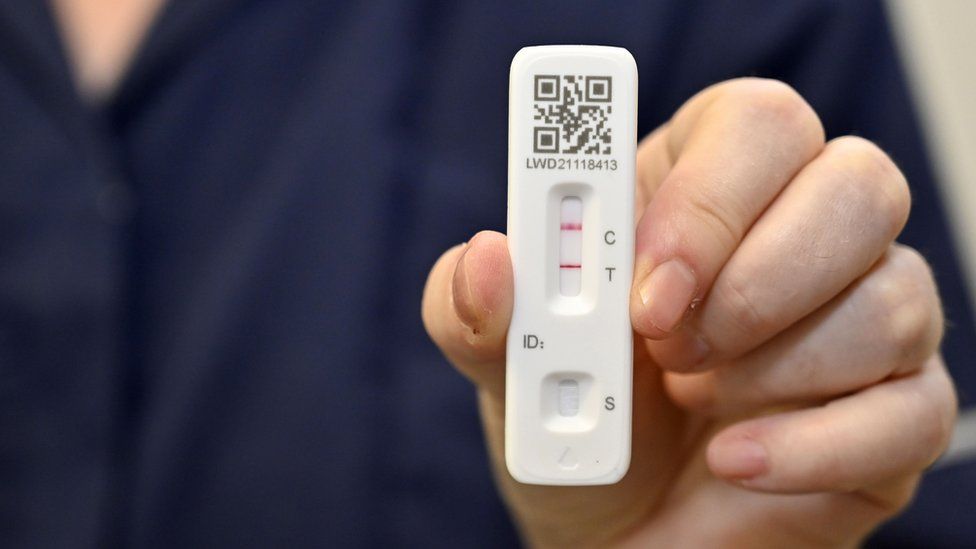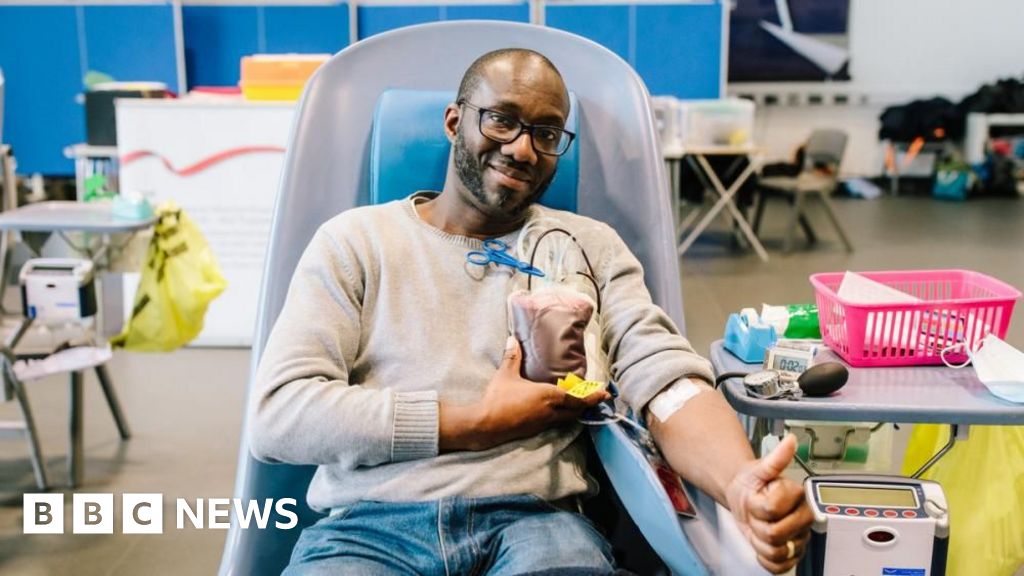ARTICLE AD BOX
 Image source, Science Photo Library
Image source, Science Photo Library
Free LFT's will be available for people in Wales with coronavirus symptoms until the end of July
Lateral flow tests will remain free for people in Wales with Covid symptoms until the end of July.
But self-isolation payments of £500 will end on 30 June to all except those working in social care.
This comes as the most recent data showed one in every 45 people in Wales had Covid.
England and Scotland have already ended access to free LFTs to most people, with Northern Ireland due to end free access at the end of June.
The continued availability of free LFTs to symptomatic people "should make a difference" according to Dr Sir Frank Atherton, the chief medical officer for Wales.
"Ministers here are quite clear that they prefer to remove protections and to make easements to the situation when we're on the downward turn," he said.
"So when we're on a rise of community infection, when rates are actually going up, people are coming to more serious harm, that's the time to delay those changes.
"And that's really why we have decided in Wales to continue with the testing for people who are symptomatic with coronavirus symptoms for a further month."
Self-isolation payments of £500 will end on 30 June, while the Covid-19 statutory sick pay enhancement scheme will be extended until 31 August to support social care staff to stay away from work if they test positive.
Image source, Getty Images
Image caption,The health minister said only people working in social care will still be eligible for self-isolation payments
Health Minister Eluned Morgan said she decided to extend payments "for care workers in particular because they are in vulnerable settings".
"I think that's going to be part of our process going forward, to make sure that we are protecting the most vulnerable."
The Welsh government said continuing with LFTs would cost approximately £1m and, if self-isolation payments were to continue, given the number of positive tests, it estimated continuing this until the end of July would cost £3m-£4m.
It added that the costs of continuing with the Covid-19 statutory sick pay enhancement scheme would be about £1.5m.
How many people are testing positive with lateral flow tests?
The latest figures from Public Health Wales showed the highest number of LFTs coming back positive since the end of April.
There were 9,406 positive tests in the most recent week, with the highest number continuing to be recorded by people aged 40 to 59.
So far, there have been more than 12.5 million LFT results reported in Wales since January last year.
How much Covid infection is still out there?
The Office for National Statistics (ONS) estimated in its weekly swab survey that infections were rising in Wales, as in other UK nations too, and were highest in Scotland.
It said the rise was likely to be caused by infection in the Omicron sub-variants BA.4 and BA.5.
However in Wales, the BA.4 and BA.5 sub-variants are currently outnumbered by the Omicron BA.2 variant, according to those sequenced in the most recent week.
Image source, Getty Images
Image caption,The chief medical officer for Wales said coronavirus measures, like wearing face coverings, should come back if there is a surge in case numbers
What about the future?
Dr Atherton said he anticipated further surges in the future, saying: "Whenever we have these surges, we should go back to some of those things that we know prevent transmission.
"So social distancing, face coverings in crowded places and making sure that if we have symptoms of any respiratory infection that we self-isolate.
"All of those things will help to break the chains of transmission, and I think as we go forwards, looking into the crystal ball slightly, I think we are going to see further surges of coronavirus and we will have to put those measures in place."
"But I think that they should be put in place voluntarily by people acting sensibly, because we know what to do now, rather than through legislation or mandates."

 2 years ago
100
2 years ago
100








 English (US) ·
English (US) ·